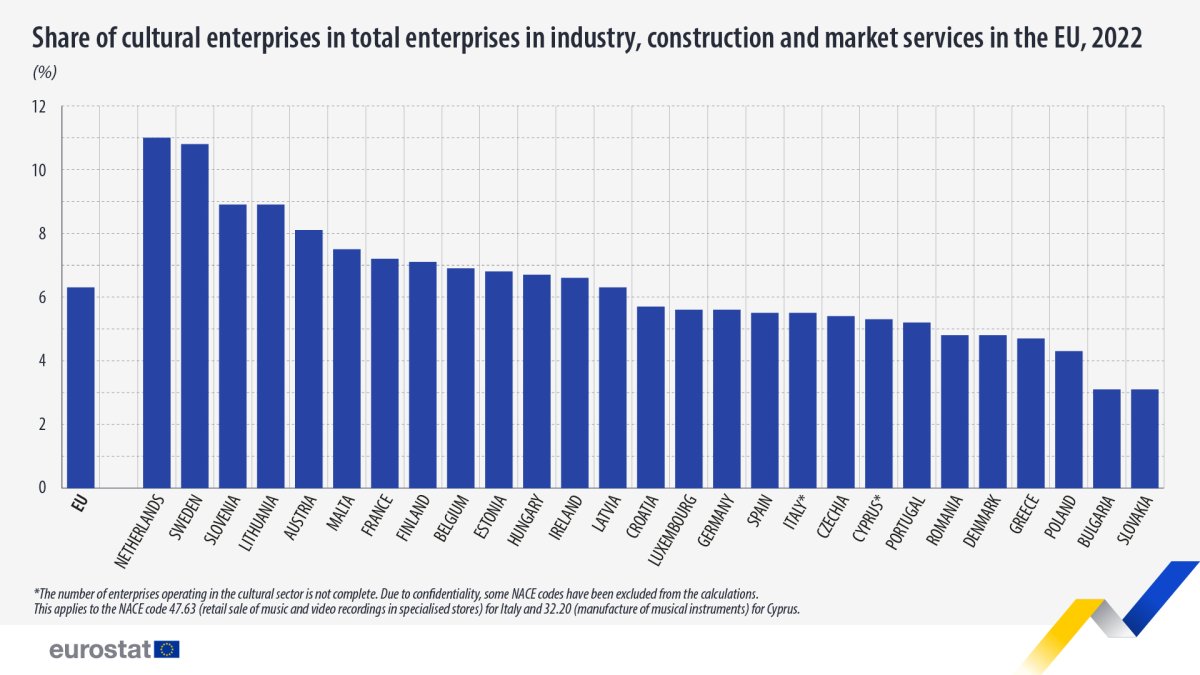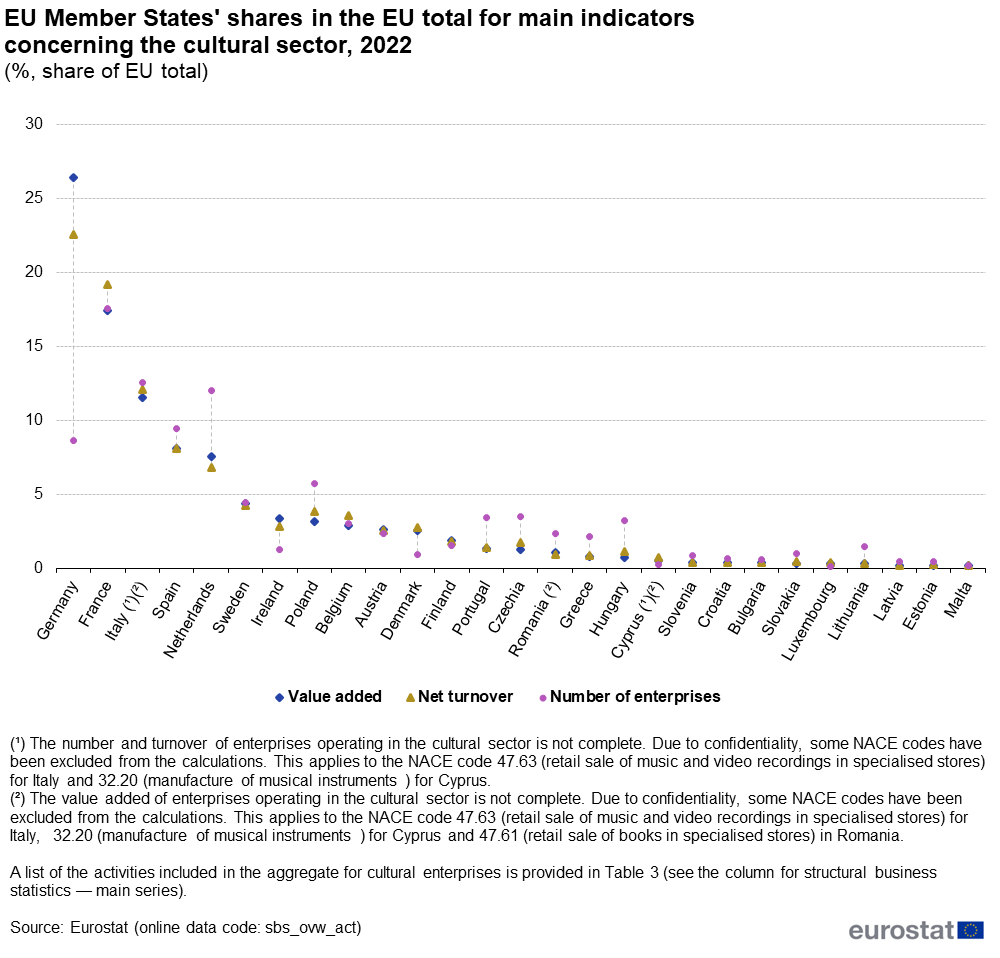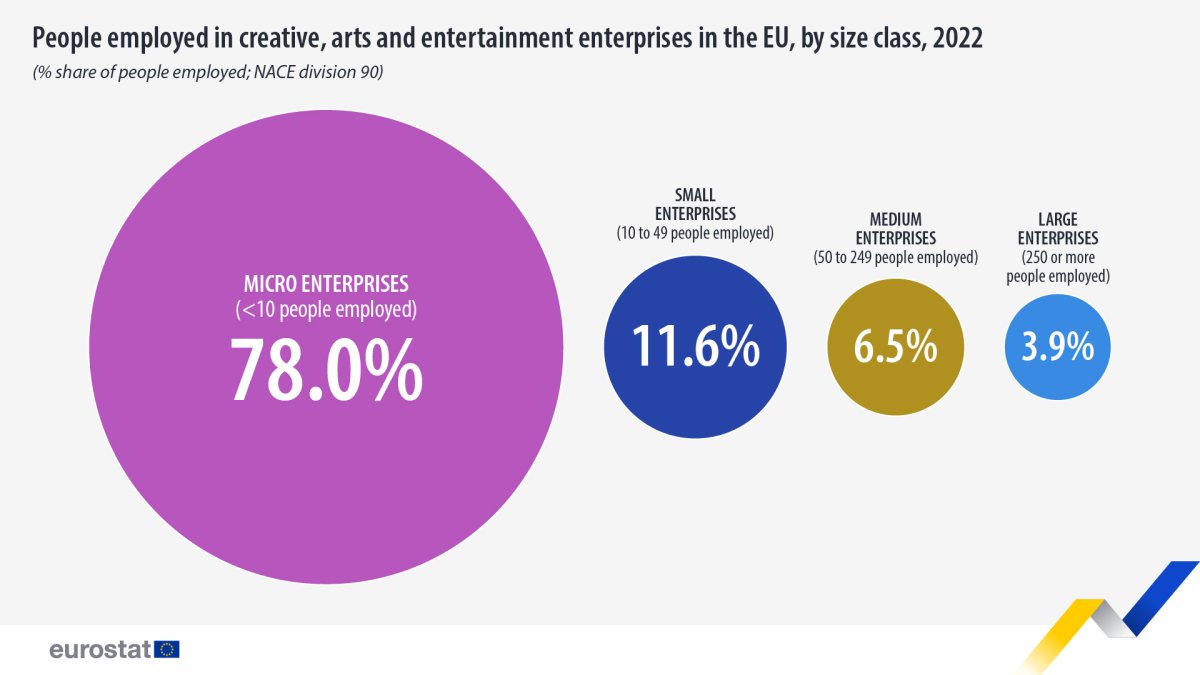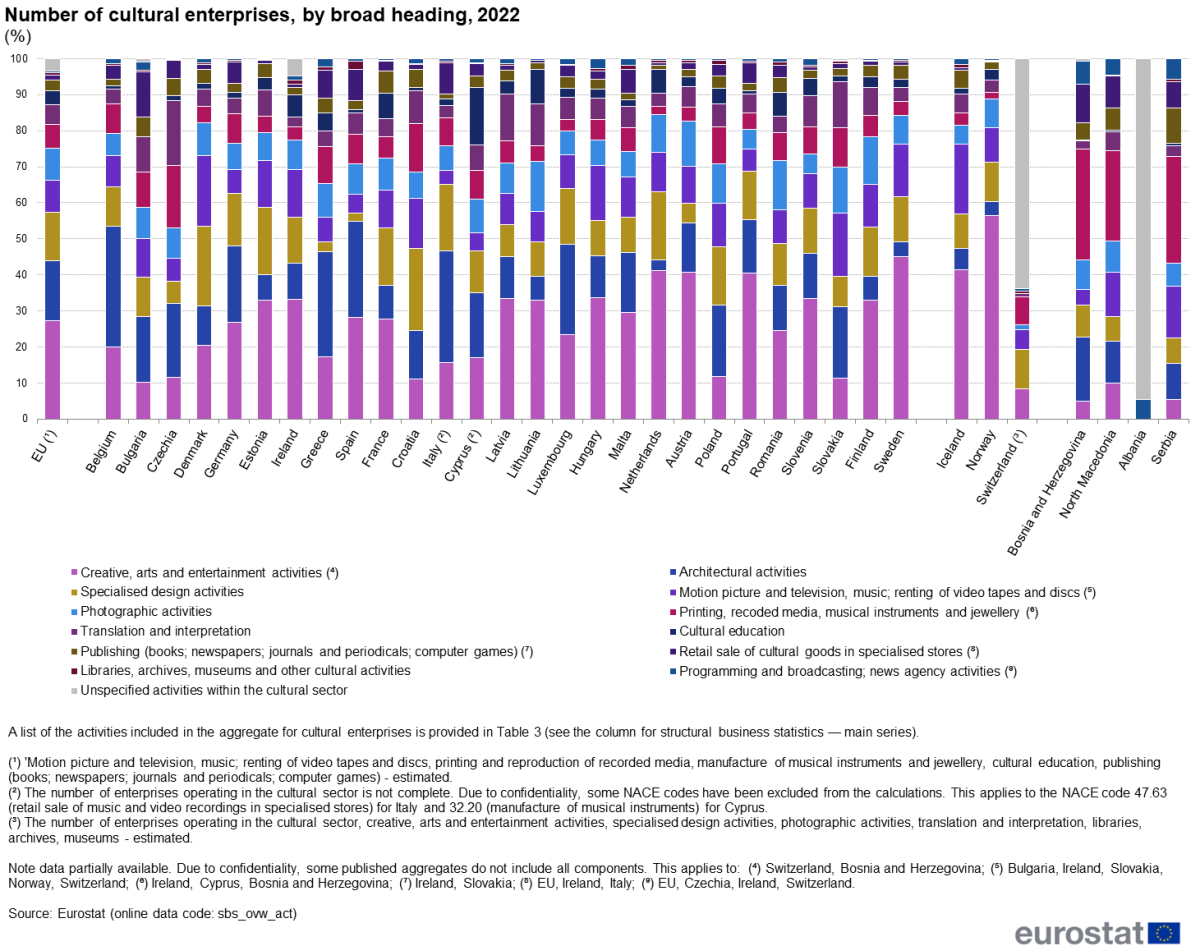The highest value added generated by cultural enterprises as a share of the national business economy was in Cyprus (5.4%) and Finland (2.8%). The highest share in turnover for cultural enterprises was in Cyprus (5.4%), followed by France and Sweden (both at 1.8%).
Just over half of all cultural enterprises in the EU (51.5%) were located in 4 EU countries: France (17.5%), Italy (12.5%), the Netherlands (12.0%) and Spain (9.4%).
In 2022, Germany accounted for the highest proportion of value added generated by cultural enterprises in the EU (26.4% of the EU total), followed by France (17.4%) and Italy (11.5%). Together, these three countries accounted for 55.3% of the total value added generated. The same three countries also accounted for 53.9% of the EU cultural sector’s turnover.
The Netherlands (11.0%) and Sweden (10.8%) had the biggest percentage of cultural firms in their respective national business economies, followed by Slovenia and Lithuania (8.9%) and Austria (8.1%). In contrast, cultural firms accounted for fewer than 5% of all businesses in six EU countries: Bulgaria and Slovakia (3.1% each), Poland (4.3%), Greece (4.7%), and Denmark and Romania (4.8% each).
In 2022, most of the EU cultural sector’s value added was generated by small and medium-sized enterprises - EUROSTAT
The significance of small and medium-sized businesses (SMEs) in the industry is demonstrated by a size class study. 78% of workers in the EU's creative, artistic, and entertainment industries were employed by microenterprises in 2022, followed by small businesses (11.6%) and medium-sized businesses (6.5%). Of these specialists, just 3.9% worked for large companies.
Eurostat categorises small and medium-sized enterprises (SMEs) by their workforce size and financial parameters, ranging from micro enterprises with fewer than 10 employees to medium-sized enterprises employing up to 249 people. These businesses must have an annual turnover not exceeding €50 million or a balance sheet total of no more than €43 million. Enterprises with 250 or more employees are classified as large enterprises.
According to the statistical authority, the cultural sector encompasses 21 economic activities across various professions such as publishers, architects, designers, photographers, translators, educators, musicians, journalists, and artists. These professions span manufacturing, retail, media production, broadcasting, design, cultural education, and preservation, covering everything from book publishing and instrument making to museum curation and entertainment.
Of all cultural enterprises operating in the EU in 2022, the largest number were involved in creative, arts, and entertainment activities (27.4%). In addition, two other broad headings accounted for a double-digit share of the total number of cultural enterprises : architectural activities (16.5%) and specialised design activities (13.5%).
In 2022, though creative, arts, and entertainment were the biggest areas in terms of the number of enterprises, shows that the highest value added was generated by:
--Publishing of books, newspapers, journals, and periodicals; computer games (14.9%)
--Architectural activities (14.6%)
--Motion picture and television, sound recording and music publishing; renting of videotapes and discs (14.2%)
--Printing and reproduction of recorded media; manufacture of musical instruments and jewellery (13.5%).
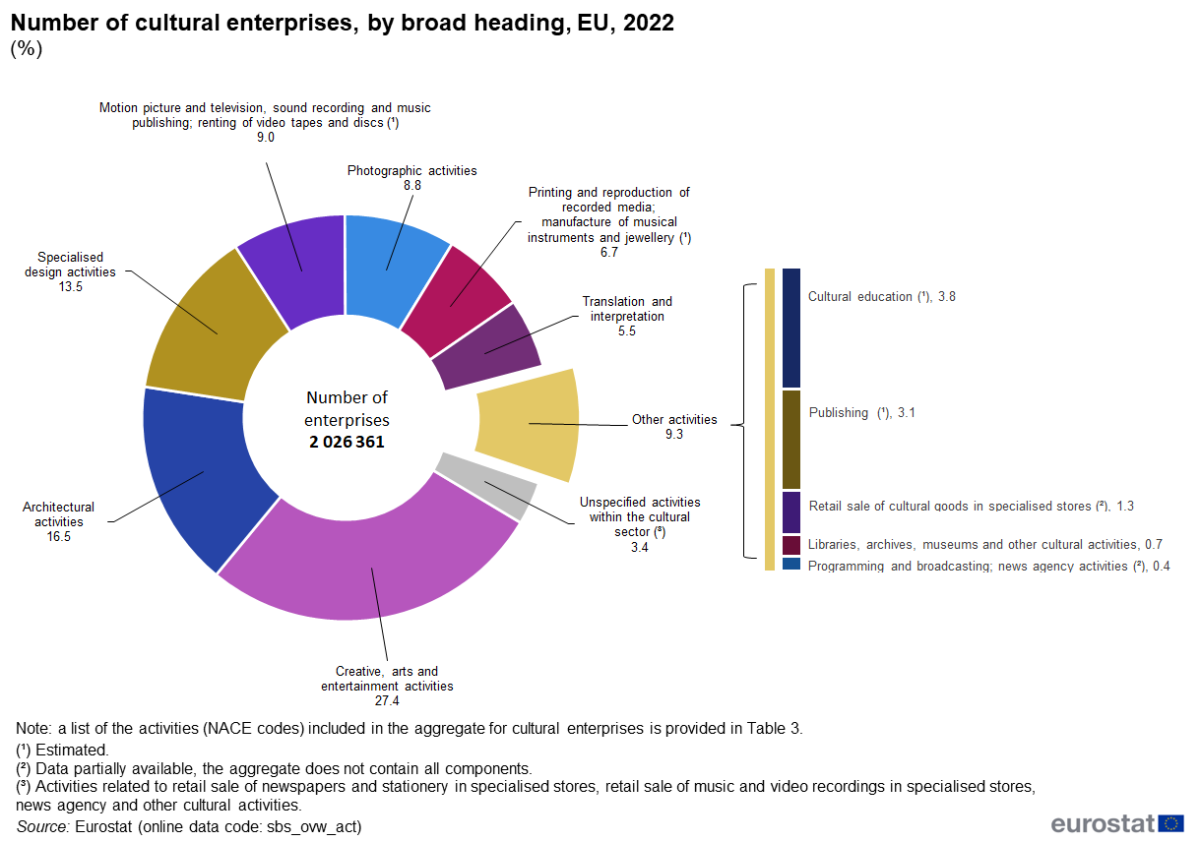
Among all types of cultural activities, programming and broadcasting; news agency activities stood out for the economic value they generated in proportion to the number of enterprises. With just 0.4% of the total number of cultural enterprises, these activities generated 7.9% of the sector’s total value added in the EU (€15.8 billion).
By contrast, activities related to cultural education, which accounted for 3.8% of enterprises in the sector, generated 0.8% of the cultural sector’s total value added (€1.6 billion).









